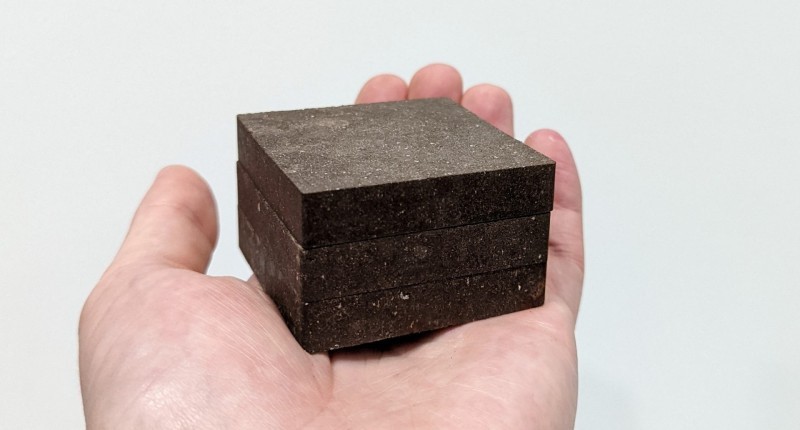Scientists from the University of Manchester have developed a new material called 'StarCrete,' which could potentially be used to build homes on Mars. The material is made from potato starch, a pinch of salt, and extra-terrestrial dust.
This development could pave the way for cost-effective and simple building infrastructure in space, something that has been a challenge for space explorers.

Stronger than Concrete
Infrastructure development in space is currently an expensive and challenging procedure. In order to make the process simpler, scientists are looking into using simple materials that are readily available in extraterrestrial environments.
One potential remedy is the "StarCrete" material created by the researchers, which is twice as strong as regular concrete.
The material was made using potato starch, salt, and simulated Martian soil. They proved that potato starch can serve as a binder when combined with artificial Mars dust to create a substance that resembles concrete.
When the material was tested, the researchers discovered that "StarCrete" had a compressive strength of 72 Megapascals (MPa), more than twice as strong as the 32 MPa found in regular concrete.
But StarCrete made from moon dust was even stronger at over 91 MPa.
A Weird Binding Agent
The team's discovery builds on earlier work in which they employed the blood and urine of astronauts as a binding agent. Although the final product had a compressive strength of about 40 MPa, the procedure required blood frequently, making it less practical for usage in space.
The scientists discovered that utilizing potato starch as a binding agent was a more practical alternative to using human blood.
"Since we will be producing starch as food for astronauts, it made sense to look at that as a binding agent rather than human blood. Also, current building technologies still need many years of development and require considerable energy and additional heavy processing equipment which all adds cost and complexity to a mission," Dr. Aled Roberts, lead researcher of the project said.
"StarCrete doesn't need any of this and so it simplifies the mission and makes it cheaper and more feasible. And anyway, astronauts probably don't want to be living in houses made from scabs and urine!"
StarCrete on Earth
According to the researchers, 25 kg of dried potatoes (crisps) could make nearly half a tonne of StarCrete or more than 213 bricks' worth of material. Comparatively, it takes about 7,500 bricks to construct a 3-bedroom home.
They also discovered that magnesium chloride, a common salt that may be obtained from the Martian surface or via astronaut tears, greatly increased the strength of StarCrete.
The project's subsequent phases will involve bringing StarCrete from the lab to applications. DeakinBio, a start-up business founded by Dr. Roberts and his team, is looking into methods to make StarCrete better so that it can be utilized on Earth as well.
If used on Earth, StarCrete might provide a more environmentally friendly concrete alternative, according to the team.
The team discussed this cosmic concrete in great detail in the journal Open Engineering.
Related Article : NASA Spots Unusual Polka Dots in Sand Dunes on Mars

ⓒ 2025 TECHTIMES.com All rights reserved. Do not reproduce without permission.




